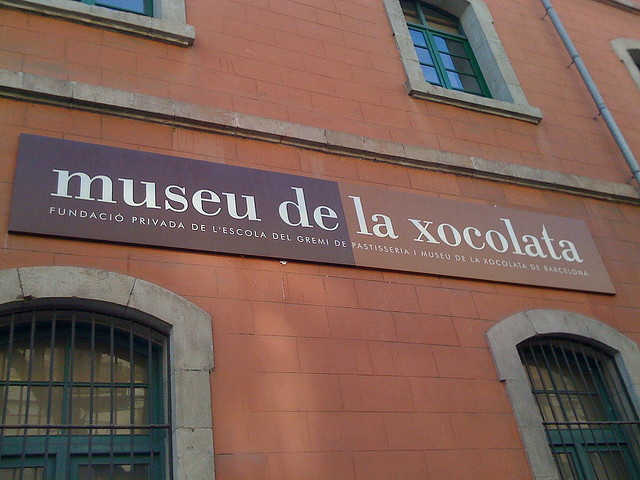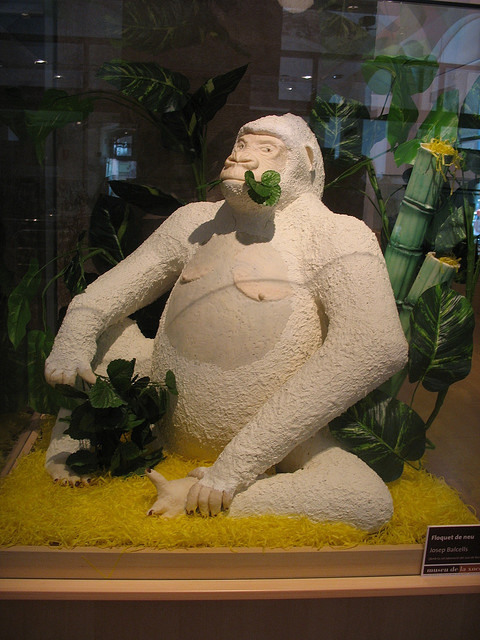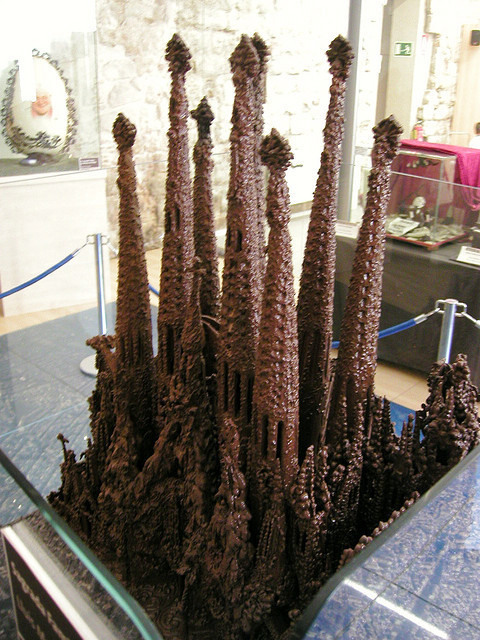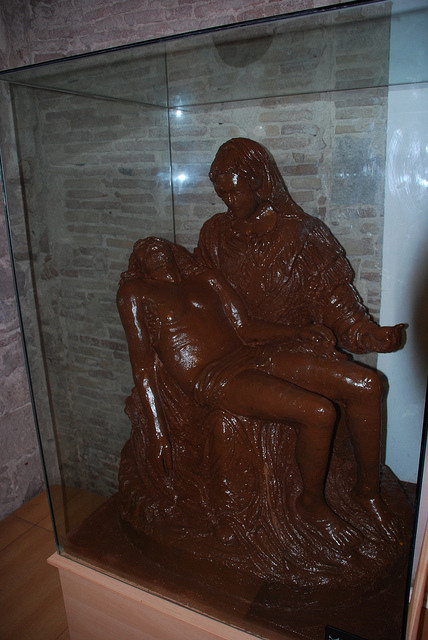
500 years ago, chocolate in the form of cocoa beans first came ashore in Europe. Coming into port in Spain, Hernan Cortes and his conquistadors brought the spiced treat with them after pillaging the Mayan and Aztec empires of Central America, where cocoa beans had been used to create chocolate variants for over 3,000 years.
In honor of this trans-Atlantic transfer, the Barcelona Confectionary Guild has set up the Chocolate Museum to tell the story of chocolate and its modernization. Although the history section of the museum is in no way perfect, visitors get a general trajectory of chocolate’s evolution, moving from bitter water, to the stunningly detailed sculptures that fill the museum. By using the statues to visibly depict the modern use of chocolate innovation, the arc of the history of chocolate feels fairly complete.
Upon entrance to the museum, guests are greeted by a massive white chocolate ape named Snowy, along with their own chocolate bar as part of their admission. As they gnaw down the confectioner’s chocolate, guests walk past glass-covered sculptures made entirely of chocolate. The sculptures include some famous cultural icons such as Minnie Mouse and Louis Armstrong. However, the bulk of work focuses on Spanish architecture, proudly featuring Sagrada Familia, one of Gaudi’s famous houses and creatures from Parc Guell.
with their own chocolate bar as part of their admission. As they gnaw down the confectioner’s chocolate, guests walk past glass-covered sculptures made entirely of chocolate. The sculptures include some famous cultural icons such as Minnie Mouse and Louis Armstrong. However, the bulk of work focuses on Spanish architecture, proudly featuring Sagrada Familia, one of Gaudi’s famous houses and creatures from Parc Guell.
Combining history, the world’s favorite treat and a small dash of Spanish pride, the museum offers something for every chocolate lover.
The Chocolate Museum is a dynamic facility promoted by the Barcelona Provincial Confectionery Guild and located in the former Sant Agustí monastery. It provides a journey through the origins of chocolate, its arrival in Europe and its spread as an element between myth and reality, its medicinal properties and nutritional value, relating tradition with the future and forming part of our collective imagination.


The Chocolate Museum is located in a historic building that already had a relationship with chocolate: in the 18th century the Bourbon army was a fanatical consumer of chocolate and, according to the ordinances, chocolate was present on the menus of the 18th-century military academies: “For breakfast each cadet and company officer shall be given one and a half ounces of chocolate with a quarter of a pound of bread...”. When the troops were in barracks, acting as garrison, chocolate was also commonly eaten. The halberdier corps, the monarch’s personal bodyguard, was enviously known as the “chocolateros”, because, as they were a pampered, elite corps, they consumed a great deal of chocolate.
Since the age of discovery in the 15th century, chocolate has played a role in the economic and social fabric of Barcelona. Along these lines, Barcelona port acted as a starting point for the sale and distribution of the product all over Europe.
In addition, the first workshop that transformed drinking chocolate into a solid product is recognised to have existed in the city at the end of the 19th century.